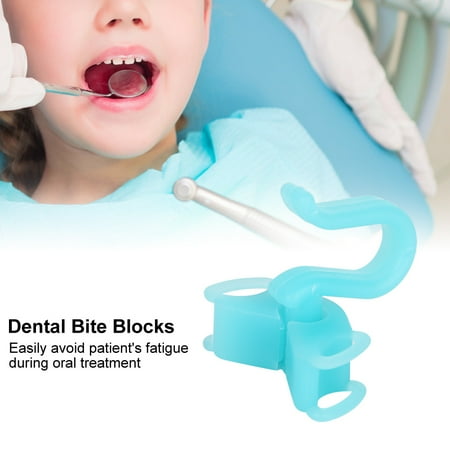Bite Blocks Explained: Correct Your Orthodontic Bite

When it comes to orthodontic treatment, one of the most crucial aspects to consider is the correction of the bite. A bite refers to the way the upper and lower teeth come together when the mouth is closed. Ideally, the upper teeth should slightly overlap the lower teeth, and the molars should fit together in a specific relationship. However, for many individuals, their bite may not be perfectly aligned, which can lead to various issues such as difficulty chewing, speaking, and even breathing. This is where bite blocks come into play, a valuable tool used in orthodontics to correct bite problems.
Understanding Bite Problems
Before diving into the world of bite blocks, it’s essential to understand the different types of bite problems that exist. These include:
- Overbite: When the upper front teeth overlap the lower front teeth excessively.
- Underbite: When the lower front teeth are in front of the upper front teeth.
- Crossbite: When the upper teeth bite inside the lower teeth.
- Open Bite: When the upper and lower front teeth do not meet.
Each of these bite issues can cause discomfort, affect the appearance of the smile, and even lead to more severe dental health problems if not addressed.
What are Bite Blocks?
Bite blocks, also known as orthodontic bite blocks or bite turbos, are small appliances that are attached to specific teeth to help correct bite issues. They work by altering the biting surface of the teeth, guiding the upper and lower jaws into a more correct relationship. Bite blocks can be made from various materials, including metal, ceramic, or resin, and are designed to be as comfortable as possible for the patient.
How Do Bite Blocks Work?
The process of using bite blocks begins with a thorough examination by an orthodontist. The orthodontist will assess the patient’s bite and determine the best course of action. If bite blocks are recommended, they will be attached to the teeth, usually during the initial stages of orthodontic treatment.
When a patient bites down with bite blocks in place, the blocks prevent the teeth from coming together in their usual manner. This forces the jaw to adjust its position, gradually training the muscles and bones to adopt a more correct bite alignment. Over time, the bite blocks help to correct the bite problem, improving both the function and aesthetics of the teeth.
Benefits of Bite Blocks
The use of bite blocks in orthodontic treatment offers several benefits:
- Efficient Bite Correction: Bite blocks can significantly reduce the time needed to correct bite issues.
- Improved Smile Appearance: By aligning the teeth and jaw properly, bite blocks can enhance the overall appearance of the smile.
- Enhanced Dental Function: Correcting the bite improves chewing efficiency and can reduce the risk of dental problems such as tooth wear and TMJ disorders.
- Customizable: Bite blocks can be tailored to address specific bite issues, making them a versatile tool in orthodontic treatment.
The Process of Getting Bite Blocks
Getting bite blocks involves several steps:
- Consultation: An initial consultation with an orthodontist to discuss treatment options and determine if bite blocks are suitable.
- Impressions: The orthodontist will take impressions of the teeth to create models.
- Fabrication: The bite blocks are fabricated based on the patient’s dental model.
- Placement: The bite blocks are attached to the teeth during a follow-up appointment.
- Follow-Up: Regular check-ups with the orthodontist to monitor progress and make any necessary adjustments.
Conclusion
Bite blocks are a valuable tool in the field of orthodontics, offering an effective way to correct bite problems and improve both the function and appearance of the teeth. By understanding how bite blocks work and the benefits they provide, individuals can make informed decisions about their orthodontic treatment. Whether addressing an overbite, underbite, crossbite, or open bite, bite blocks can play a crucial role in achieving a healthier, more beautiful smile.
FAQ Section
What are the common types of bite problems that bite blocks can correct?
+Bite blocks can correct overbite, underbite, crossbite, and open bite issues. Each of these conditions affects the alignment of the teeth and jaws, and bite blocks help in guiding them into a more correct relationship.
How long does it take to see results from using bite blocks?
+The time it takes to see results from bite blocks can vary depending on the individual's bite issue and the extent of the correction needed. Generally, noticeable improvements can be seen within a few months, but full correction may take up to a year or more, including the orthodontic treatment time.
Are bite blocks comfortable to wear?
+Bite blocks are designed to be as comfortable as possible. While there may be a slight adjustment period, most patients find them to be very tolerable. It's also worth noting that the benefits of correcting bite issues often outweigh any temporary discomfort.
In conclusion, bite blocks are a significant advancement in orthodontic treatment, offering a precise and efficient method to correct various bite problems. By enhancing both the function and aesthetics of the teeth, bite blocks play a crucial role in helping individuals achieve a healthier, more confident smile.
